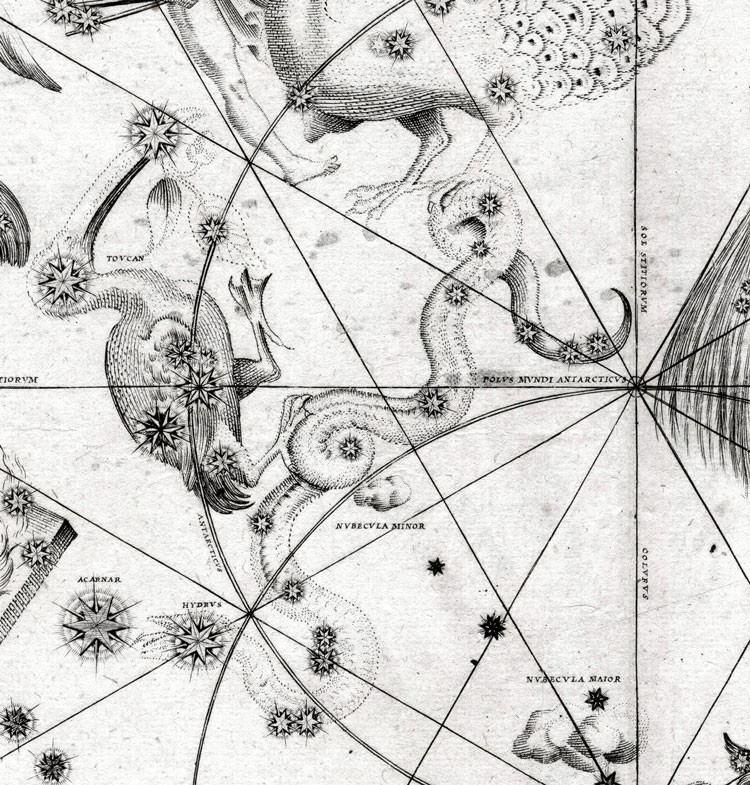|
Hydrus is one of twelve southern constellations mapped by Dutch explorer Frederick de Houtman and navigator Pieter Dirkszoon Keyser in 1595-97, formed into constellations by Dutch astronomer Petrus Plancius, and introduced to the world at large by Johann Bayer in his 1603 Uranometria. As shown in the historical maps below, Hydrus originally extended all the way to Pavo, but by Bode's time it had considerably shrunk, extending only to the new constellation of Octans. In addition, its position had slightly changed, placing it between Nubecula Major and Minor (the Large and Small Magellanic Clouds), instead of to the west of both of them.
Historical Maps of Hydrus
From Bayer's 1603 Uranometria (Image from the USNO copy of the 1661 edition of Bayer's Uranometria)

From Bode's 1801 Uranographia (Image Credit and © Tartu Observatory Virtual Museum; used by permission)

Modern Map of Hydrus
Modified version of Wikimedia Commons map by Torsten Bronger

Constellations Bordering Hydrus
(to be added in the next iteration of this page)
Stars in Hydrus
Stars that have common names often have multiple names, so the common names shown (if any) cannot be considered authoritative. Right ascension and declination are given in 2000.0 coordinates.
α Hyi
β Hyi
γ Hyi
δ Hyi
ε Hyi
|